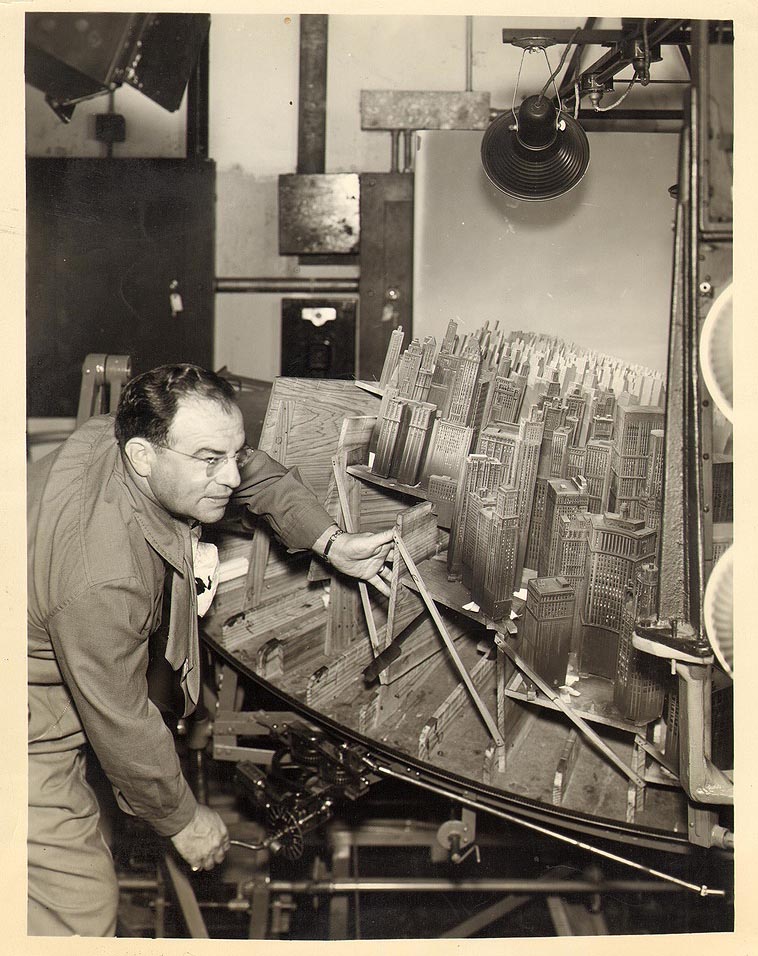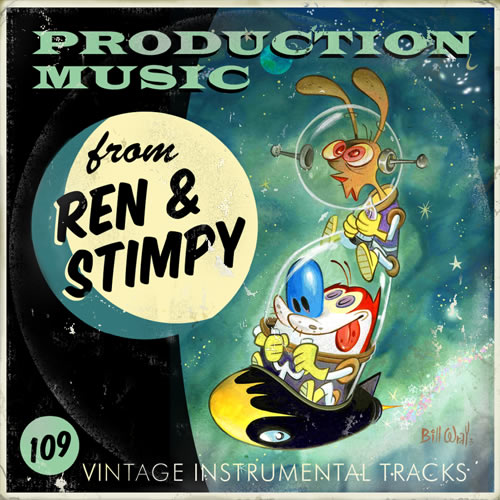Animation and comics are false siblings. They resemble one another but they’re two completely different things. The relationship a reader has with a comic is nothing like the one a viewer has with a film. When you read a comic, you’re always active, because you have to imagine all the movements that happen between the frames. In a film, you are passive: all the information is there. And when you make a comic it never happens that you have 500 or 1,000 people reading it in the same place at the same time, all reacting.Marjane Satrapi, creator of Persopolis, talks about how she found success in adapting her acclaimed two-part graphic novel into an animated feature.
Bonus tip: cast Iggy Pop.
(Via Mayerson on Animation)
Tag: animation
-
Marjane Satrapi on Adapting Comics for Animation
-
Fleischer Popeye 3d Backgrounds

Dave Fleischer of Fleischer Studios demos the distorted-architecture-on-a-turntable that his studio pioneered for creating compelling 3D backgrounds in their animated shorts. You can see it in motion in a number of their Popeye cartoons (like Popeye Meets Ali Baba and the Forty Thieves) or in their originals like Mr. Bug Goes to Town (PS: check out that awesome title card typography!)
If you happen to be in L.A. this week, you can catch some classic Fleischer shorts in pristine 35mm prints as part of Jerry Beck’s animation series at the Cinefamily. Do it!
(Via Cartoon Brew)
-
Little Nemo Turns 100
The principal factor in my success has been an absolute desire to draw constantly. I never decided to be an artist. Simply, I could not stop myself from drawing. I drew for my own pleasure. I never wanted to know whether or not someone liked my drawings. I drew on walls, the school blackboard, old bits of paper, the walls of barns. Today I’m still as fond of drawing as when I was a kid — and that’s a long time ago… The incomparable Winsor McCay, quoted in a Los Angeles Times blog post that points out that this is the 100th anniversary of McCay’s short film Little Nemo. If you’ve never seen his animated shorts — they’re among the first examples of the medium, and yet still technically brilliant — you should hit up the YouTube and get started with Nemo…
-
Bute Tarentella
[Video no longer available]
Experimental animation pioneer Mary Ellen Bute’s short film Tarentella was selected this week for preservation in the National Film Registry as a culturally significant film. From the press release:
“Tarantella” is a five-minute color, avant-garde short film created by Mary Ellen Bute, a pioneer of visual music and electronic art in experimental cinema. With piano accompaniment by Edwin Gershefsky, “Tarantella” features rich reds and blues that Bute uses to signify a lighter mood, while her syncopated spirals, shards, lines and squiggles dance exuberantly to Gershefsky’s modern beat. Bute produced more than a dozen short films between the 1930s and the 1950s and once described herself as a “designer of kinetic abstractions” who sought to “bring to the eyes a combination of visual forms unfolding with the … rhythmic cadences of music.” Bute’s work influenced many other filmmakers working with abstract animation during the ‘30s and ‘40s, and with experimental electronic imagery in the ‘50s.
Bute’s final piece was an interpretation of Finnegans Wake, one of the very few attempts ever made at staging Joyce’s novel of troubled dreams.
-
Sonar
Sonar from Renaud Hallée on Vimeo.
Sonar by Renaud Hallée. Hypnotic music visualization (keyframe animated rather than generative, though). Reminds me of a cross between a backwards Osu! Tatakae! Ouendan and my favorite NASA video of all time, the Huygens Probe Descent Camera.
(Via Kitsune Noir)
-
Early Experimental Computer Animation Modeling a Cat’s Gait
[Video no longer available]
Early experimental computer animation through mathematical modeling of a cat’s gait. Evidently, equations were written to model the basic skeleton form of the cat and its walk, and the computer was used to generate a shadow-like projection printed frame by frame onto paper using ASCII-like characters (this animation was done in 1968 on a Soviet BESM-4 mainframe, so I’m not sure what character set they’re actually using here). The result could then be filmed, inverted, and manually cleaned up. Not exactly something that would really take the animation world by storm, but it’s an interesting usage of mainframes for art.
See also: more detailed info about the animation including links to the fulltext paper (in Russian – Google Translate does a pretty good job)
(Via Make)
-
Ren and Stimpy Production Music

WOW, I’m about four years late on this one, but in case anyone else hasn’t come across this: a fan has collected and cataloged a huge chunk (nearly 7½ hours worth!) of the incidental music from Ren & Stimpy. You know the stuff: the delightfully surreal, atomic age lounge music that defined the series. Don’t miss the smallish image link to Volume 2! The direct download links went dark, but if you poke around towards the bottom of the comments you can probably figure it out…
(spotted via twomuch)
-
Bill Plympton’s New BBQ Short

Bill Plympton’s got a new short aimed at the younger set on the way, about a cow who wants to become a hamburger. No dialog or sound effects; simple, blocky colors inspired (“ripped off”, in his words) by Kandinsky; and final line art rendered with Sharpie. Looks good to me!
If you’re up in NYC for the premiere (which will be at an Austin-themed BBQ joint in Manhattan that takes its inspiration from Kreuz Martket!), you can hit him up for a free cow drawing.
-
Animation: production vs. post
Mark Mayerson writes a pretty good rebuttal to the idea that the animators that worked on James Cameron’s Avatar were shortchanged by the film’s placement as a live-action feature:
“I’ve written extensively on how fragmented the process of making an animated film is and how so many of the acting decisions are made before the animator starts work. The character designs, the storyboard and the voice performance all make acting decisions that constrain the animator’s interpretation. There is no question that motion capture is yet another constraint, probably larger than all the others. To insist that Avatar is an animated film is to marginalize animators even more than they are in what are generally considered animated films. Is this the direction we want things to go? Better to agree with James Cameron and focus our attention on films where animators create, not enhance, performances.”
-
“I don’t carry a sketchbook to do pretty drawings in it.”
Storyboard artist and animation historian Mark Kennedy on keeping a sketchbook:
I’ve seen artists on the Internet question the necessity for this, saying that you can’t really learn anything about drawing by carrying a sketchbook, and that the drawings you do in a sketchbook are always dashed off, careless and sloppy. […]
The real reason I carry a sketchbook is so that I can record and remember details that I observe. Drawing from real life is the best way to teach yourself how people look, act and move in a naturalistic way (and help you remember it later). Life drawing and studying the work of other artists and animators are great learning experiences, but those things aren’t the same as studying real life. A great life drawing is an amazing feat and you can learn a lot about drawing and anatomy by going to life drawing. But very few life drawings give you a lot of information about the model’s personality and what kind of human being they are. You’re never going to create an original story or character based on a life drawing model you saw.
